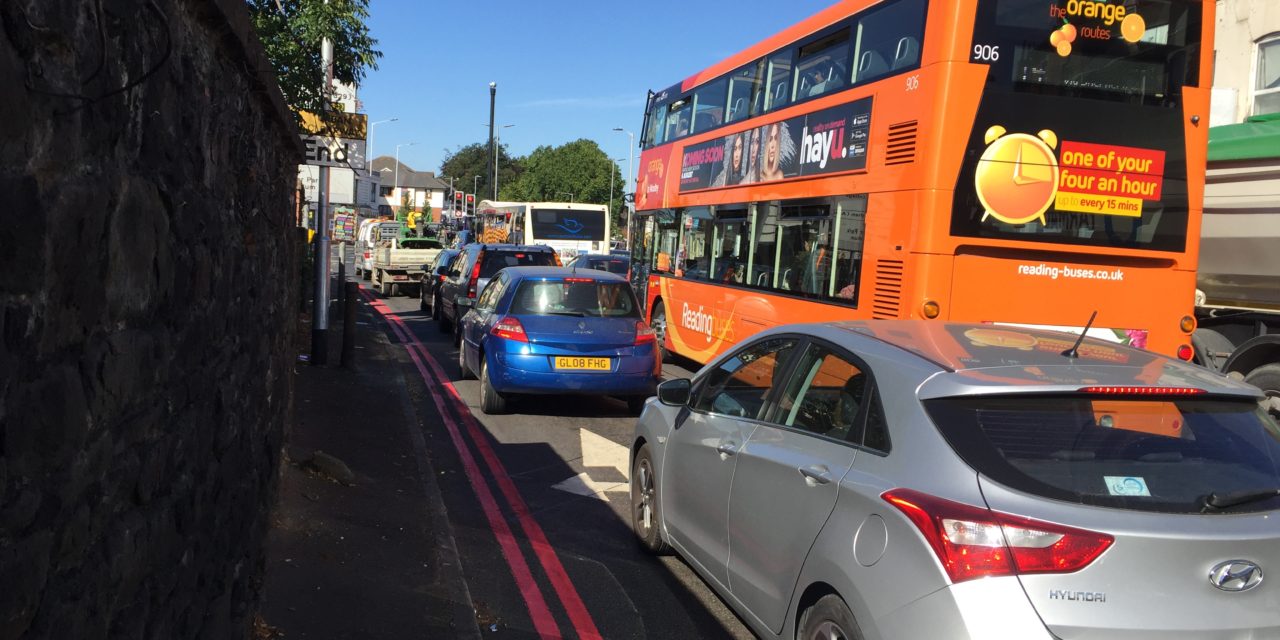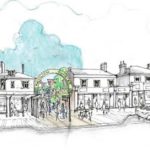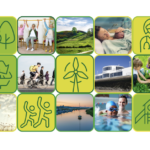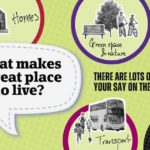A clean air zone, workplace parking levy, emissions and road user charging, a third Thames bridge and a new north orbital route are up for consultation in Reading.
The council has published its most radical transport strategy so far, part of its plan for ‘net zero carbon Reading’ by 2030.
The draft plan for the authority’s strategy to 2036 sets out nine themes:
- Demand management schemes: To investigate introducing some or all of; a clean air zone, workplace parking levy, emissions-based charging and road user charging. The council says revenue would be re-invested in sustainable transport alternatives to the private car.
- North Reading orbital route: A new route to possible park and ride sites around the northern edge of Reading, linking the A4074 to the A4155. The council says it would aim to take traffic away from Caversham centre and improve public transport provision but would be subject to delivery of the proposed third Thames bridge.
- Third Thames bridge: A third crossing to promote public transport links either side of the river, including major bus priority and segregated walking and cycling facilities. The council says it will continue to work with neighbouring councils and Government to lobby for funding. The bridge scheme would include mitigation measures in South Oxfordshire and Wokingham.
- New public transport routes: Dedicated fast track public transport corridors to the south, south-west, east and west of the town centre. A new orbital corridor linking key park & ride and rail hubs with residential and employment areas.
- New and expanded park & rides: New park & rides in north Reading, Thames Valley Park, west Reading and south west Reading. The expansion of existing ones at Mereoak and Winnersh Triangle.
- Rail investment: Helping deliver Green Park Station and upgrades at Reading, Reading West and Tilehurst stations.
- Active travel: A series of strategic and local pedestrian and cycle routes, new cycle parking and a new cycle hire scheme, new ‘safer travel to school’ routes and play streets programmes.
- Electric vehicles: The delivery of on-street electric vehicle charging points, electric car club vehicles and charging bays.
- Adapting to the future: Embracing technology and innovation, including autonomous vehicles, making maximum use of the existing network through smarter traffic signals and real-time travel information and easier ways of paying for travel.
The council says a third of peak-time journeys on the IDR are by people travelling through the town.
Cllr Tony Page, lead member for strategic environment, planning and transport, called the plan Reading’s ‘most important and ambitious ever’ and said air pollution kills 36,000 in the UK every year and that figures for Reading show the town’s air pollution running at 40 per cent higher than the south east average.
He went on: “That is not a position any responsible authority can ignore.
“Reading’s road network is already at capacity. The challenge now is how to successfully absorb the huge growth in commuter trips Reading can expect over the coming years, with many thousands of new homes being built, particularly on the outskirts of the town.
“It is not acceptable for the many thousands of vehicles and lorries who have no origin, destination or purpose in Reading to continue to use the town as a short cut, polluting our air and damaging our health. They must be offered attractive, reliable and affordable alternatives to the private car.”
He acknowledged some of the schemes may appear controversial to some.
He went on: “I make no apology for that. The only way we can hope to tackle the climate emergency locally, and the poor air quality and congestion which blights parts of our town, is by taking a much more radical approach. The status quo is not an option.
“Demand management measures will remove the most polluting vehicles from our streets, particularly those with absolutely no business in Reading, with revenue raised reinvested into a raft of sustainable transport schemes.
“The strategy provides high quality, realistic and affordable alternatives to the private car through new and upgraded railway stations, new park and rides and quick, reliable public and affordable transport routes.
“Vehicles could take a more direct route and avoid the town centre if better orbital links were available. The strategy includes major new schemes, like a third Thames crossing and a new orbital route in the north of the borough.
“It includes new pedestrian and cycle routes, and the infrastructure to support it. It recognises that diesel and petrol car will eventually be banned and replaced with electric vehicles, and that we need the infrastructure to support that change.
“The strategy has been designed following Reading’s biggest ever consultation on transport last year, which produced a record number of responses and showed significant support for investment in sustainable alternatives.
“Thank you to the over three thousand people who helped shape it. It’s future success of the plan hinges on continued close partnership working – at local, regional and national level – in terms of both the design and funding of the schemes themselves.
“On March 23 the council is due to begin its final phase of consultation on Reading’s new transport strategy. Details will be publicised nearer the time and I would urge as many people as possible to take the opportunity to have their say.
The council’s strategic environment, planning and transport committee will be asked to approve the draft strategy at its meeting on Monday, March 16. A 12-week statutory consultation will then begin on March 23 and end on June 14.
The strategy can be found here.
The agenda item for the March 16 meeting is here.
mode Transport Planning associate Chris Holdup offers some initial thoughts on the strategy here.
© Thames Tap No 201 (powered by ukpropertyforums.com)
















Trackbacks/Pingbacks